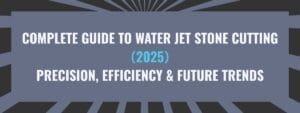Did you know? The history of cutting machines is like a long story, from simple stone knives to today’s intelligent factories that can “think” for themselves. Every step shows human ingenuity. Let’s travel through time and see who created which machines and how they changed the world!
1. Early Cutting Machines: The Invention of Hand Tools
Long, long ago, people had no electricity or machines — only their hands and simple tools. Clever humans began using stone knives, bronze chisels, and wooden saws to cut wood, metal, and stone.
Imagine a little craftsman sitting by a fire, carefully carving a weapon or a decoration with a stone knife. It was slow work, but every piece was strong and durable.
Final Product Advantages:
- Durable and functional
- Taught humans how to systematically shape raw materials, laying the foundation for mechanical cutting
2. Industrial Revolution Cutting Machines: Steam and Electric Power
A few centuries later, humans invented steam engines and electric motors. Ingenious engineers applied these powers to saws, lathes, and milling machines, allowing machines to replace human labor for repetitive tasks.
Picture a noisy factory: huge gears spinning, steam rising from pipes, and machines cutting wood and metal quickly. Products were no longer made slowly one by one—they could be produced in batches and were stronger than before.
Final Product Advantages:
- Faster production, higher output
- Stronger, more uniform products
- Reduced labor intensity
Who created it?
- Steam engine inventors like James Watt
- Early electric motor engineers
- Their inventions made mechanical cutting possible
3. 20th Century Cutting Machines: The Miracle of Computer Control
In the 20th century, computers entered the factory! People invented CNC (Computer Numerical Control) cutting machines, which can move tools automatically according to digital programs — like “computer hands” at work. Other specialized cutting machines, such as laser cutters, plasma cutters, and water jet cutters, could cut quickly, accurately, and into complex shapes.
Imagine a CNC cutting machine in a bright workshop, cutting car parts or aerospace components, while workers only need to input a program, and the machine repeats the process thousands of times.
Final Product Advantages:
- High precision and repeatable quality
- Fast cutting speed, material savings
- Smooth edges reduce post-processing
Who created it?
- 20th-century engineers and programmers
- They transformed traditional cutting into automated, high-precision production
4. Modern Cutting Machines: The Miracle of Smart Factories
Today, cutting machines no longer work alone. In smart factories, they collaborate with robots, digital twin systems, automated transport, MES, and Auto APS. The whole factory works like a brain, and every machine knows what to do next.
Imagine this scene: water jet robots precisely cutting stone, CNC lasers carving metal, AGVs automatically transporting materials, and MES monitoring each machine. Every part is accurately cut, fast, smooth, and fully traceable.
Final Product Advantages:
- Fast and efficient production
- High precision, consistent quality
- Smooth surface, minimal post-processing
- Energy-saving, low waste
- Full traceability
Who created it?
- Modern smart manufacturing engineers, robotics experts, software developers
- They combined machines, computers, and data to make cutting machines smarter and more flexible
Evolution Table of Cutting Machines
| Era | Tools / Machines | Characteristics | Typical Uses | Final Product Advantages | Evolution Compared to Previous Era |
| Early Era | Hand tools: stone knives, chisels, wooden saws | Manual, low precision, simple | Weapons, daily tools, ornaments | Durable, functional | |
| Industrial Revolution | Steam/electric saws, lathes, milling machines | Mechanized, faster, large-scale | Wooden ships, railway parts, factory machinery, textiles | Faster production, stronger products | From handwork to machine-assisted production; products larger and more uniform |
| 20th Century | CNC machines, lasers, plasma cutters, water jets | Digital control, high precision, programmable | Automotive, aerospace, electronics, construction | High precision, repeatable, less waste | From mechanical to digital precision; reduced human error |
| Modern Era | Water jet robots, CNC lasers, plasma cutters, MES, automated transport | Intelligent, automated, interconnected | Aerospace, medical implants, custom stone/glass, electronics | Fast, precise, smooth surface, energy-efficient, traceable | From stand-alone machines to smart factories; flexible, efficient, high quality |



